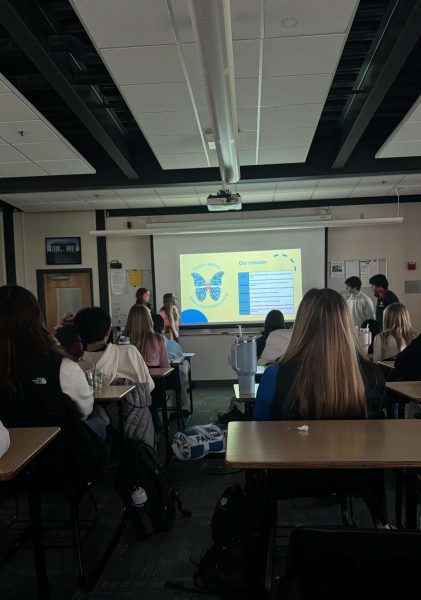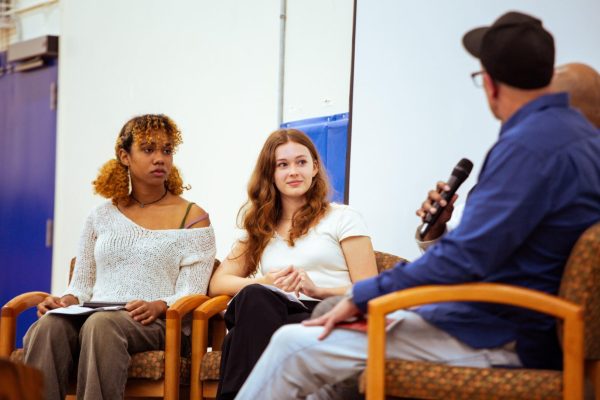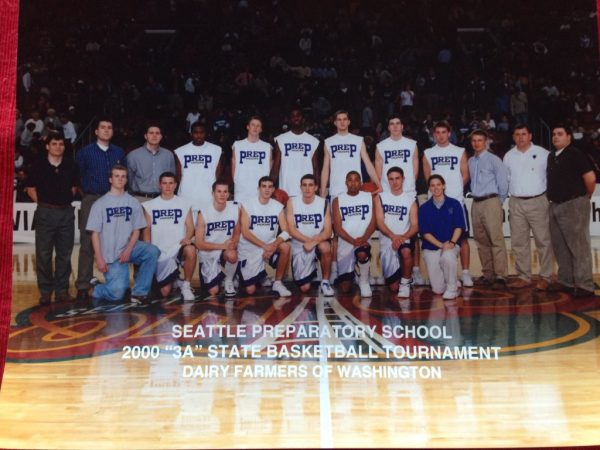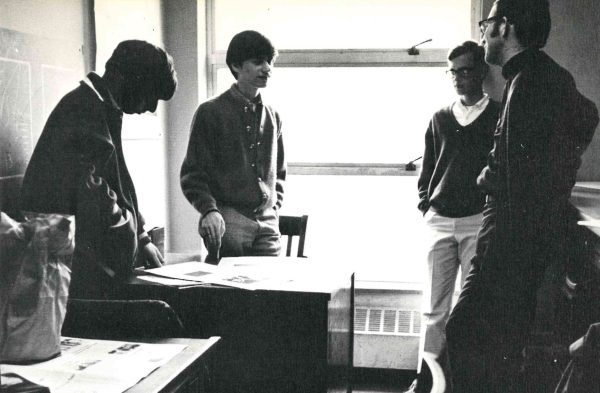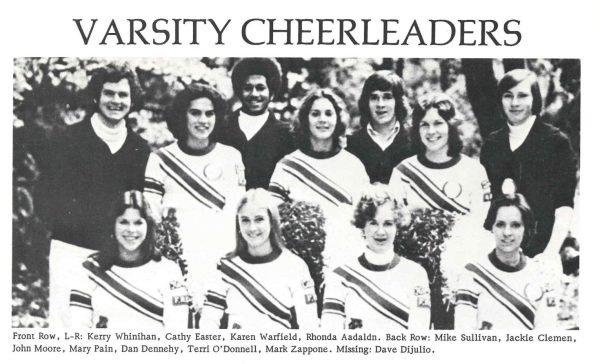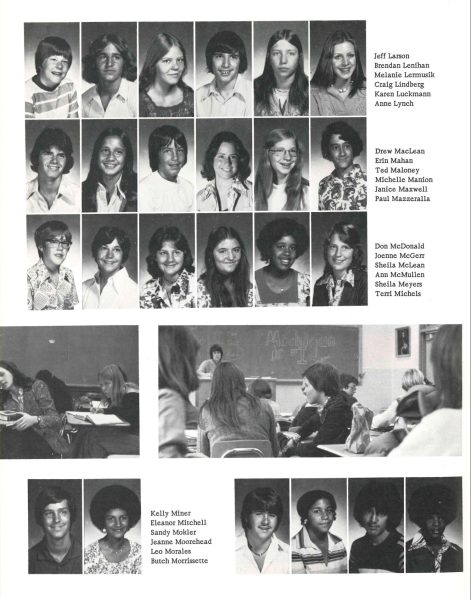FloorCookies: Hungary for Ms. Pásztor’s Blog
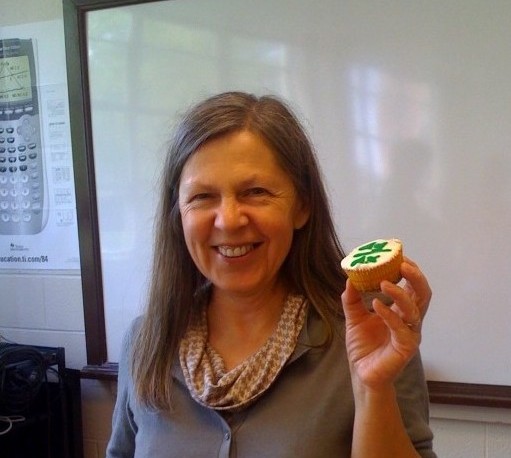
The math teacher poses with a pi-themed cupcake made by a student.
March 8, 2017
Math Teacher Ms. Pásztor has a strong passion for cooking that lead to her creation of her blog, FloorCookies. The blog covers all sorts of topics — from creative crafts to traveling to life lessons — but it all came from wanting to share Hungarian recipes that she has perfected in her free time. The Panther interviewed her this week about her culinary pursuits and what she likes to share with her community of followers.
Blog: FloorCookies.com
Annika Bjornson: What inspired you to create your blog?
Marta Pasztor: My blog, FloorCookies.com – which is almost 4 years old – was a birthday present from my son. I think he and his wife thought that this blog would be a good way for me to pass down many delicious Hungarian family recipes for them and for anyone who might be interested.
I started writing the blog very slowly. First, I researched blogs in general and food blogs in particular very extensively. I was hesitant at the beginning knowing that there were many blogs out there. I thought the whole effort could have been unnecessary and readers won’t find their way towards my blog. But my son encouraged me to tell my stories and share my favorite recipes.
AB: What are your personal favorite recipes from the blog?
MP: First of all, of course, the traditional Hungarian recipes. (I am ethnic Hungarian from Slovakia (part of Czechoslovakia until 1993)). Just to name a few of them: Pozsony crescent – yeasted dough with walnut filling, my mother’s Hungarian apple tart, Hungarian sponge cake with fruit, baked rice pudding, layered potatoes, the sheep cheese spread called Liptauer, or the famous Hungarian “gulyás” soup.
I love my quick quinoa salad, the Tarta Italiano Delicioso (delicious Italian tart) – I got the recipe from one of my students as a present a few years ago. I also share those kinds of recipes that encourage us to eat in a healthy way, encourage wellness and deliciousness, the ones that are simple and don’t use too many ingredients.
I am inspired by the cooking and baking of Anna Jones, a young British cook and cookbook author, who pushes the boundaries of vegetarian cooking, and I really enjoy the writing and recipes of the British food writer Nigel Slater, who believes in “right food, right place, right time.” My favorite lemon maple granola recipe and the chocolate muscovado banana cake recipe come from them. I love blueberries, so my blueberry muffins and blueberry and mascarpone tart recipes are among my favorites, but the salted chocolate-rye cookies, the German nut cake, grandmother’s apple cake, the morning glory oats, the Tuscan bean salad or the simple roasted cauliflower with thyme are fantastic too. Too many great but simple foods!
AB: Where does your passion for cooking come from? Family roots?
MP: My mother was an excellent cook and my sister is an excellent cook. So, the family roots are definitely there, but if someone would have told me when I was 23 years old – after I finished college – that one day I will write about food, I would have laughed really hard. Besides fiction, I love to read non-fiction and in the last few years I read extensively about food. My readings also inspired my cooking and baking, leaning towards healthier but still tasty food.
AB: When do you find time to experiment with cooking?
MP: I believe in good food, in real food, and that food doesn’t need to be complicated. I like to know what goes into my food and therefore into my body. So, I cook at home as much as possible, almost 100% from scratch. I use local, seasonal, sustainably grown ingredients as much as I can – I grew up with this type of food – this is natural for me, and I try to shop at farmers’ markets and for the best ingredients I can afford. Because I don’t want to spend all of my free time in the kitchen, so on workdays I cook very simple meals; I cook those that require more time usually on weekends. My family has a high tolerance for leftovers. For example, I rarely cook just for one particular night. When I bake, I like to share it with friends and neighbors, and I also freeze baked and cooked goods for later.
AB: Who is your blog geared towards?
MP Anyone, who is interested in and believes in simple but delicious food. But because after all I am a teacher, I hope many young people will visit my blog and learn new things as I try to inform and “teach” them. Besides food, I also write on my blog about our travels (my husband’s and mine) near and around the world, about teaching (stories from my career), my readings and inspirational quotes, crafts, things related to nice living, gardening – simply the things I find beautiful and inspiring in everyday life.
Other comments and information:
I believe in lifelong learning, and writing this blog fits this philosophy beautifully. I continue learning more about food and I practice my writing and exercise my creativity as I create blog posts. My blog is truly a work in progress. I write it in two languages, English and my native Hungarian. I am lucky that my husband is a very good writer – he is the one who helps me with editing. The photos that appear on my blog were taken by me except for some from our travels, which were taken by my husband. As for the food photography: I cook the food, bake the pastries, then I photograph them, and my family eats them.
Some of my popular, not food related posts include a story about an unplanned Christmas tree that was inspired by a seedling I received from a Prep student when I started teaching here. There are also posts about my wonderful students (published with their permission) and a series of three posts about a math portfolio project done by my students. And there is a writing in which I tell the story how I challenged myself to post on my blog every day of November 2015. Some other posts are photo essays about flowers, travel, and everyday beauty.
Writing this blog has been very educational for me so far, at times challenging, but mainly lots of fun. I hope it will continue to be all of these for a long time. I still have many more great ideas.
Thanks for asking these questions and the opportunity to introduce my blog. Thanks in advance for checking out FloorCookies.com. I even have a Facebook fun page for my blog.
A favorite recipe from FloorCookies: Hungarian apple tart
The Hungarian word pite is not easy to translate into English. My dictionary says: pite – fruit-flan, pie, tart, and for almás pite – apple tart/turnover. Other sources call it apple cake. The name doesn’t really matter – the two flaky buttery crusts, bottom and top, filled with cinnamon flavored apples make one of the classic Hungarian pastry staples.
The closest to it is the famous Austrian Linzer Torte, originated in the city of Linz. In a Hungarian kitchen, pite is usually baked in a bigger rectangular baking dish (not like American tarts or pies), and you can find as many different recipes, as you find kitchens. My mother alone had four different versions for it! This is one of her recipes.
The sweet smell and taste of this pastry vividly brings back the memories of my childhood Sunday afternoons – two little girls, my sister and I, constantly sneaking into the pantry to “steal” just one more, and then again, just one more piece from the covered glass tray where my mother wanted to keep the small rectangular pieces of the pite for more than only one day. You cannot stop eating this tart! But back to the name. Outstanding New York pastry chef, Sarabeth Levine, describing her Sweet Tart Dough in her cookbook Sarabeth’s Bakery: From My Hands to Yours says: “Unlike pies, which are served from their baking dishes, tarts are removed from their pans, and therefore require a crisp, strong crust to contain the filling.” This convinced me: I am calling my almás pite an apple tart.
for the dough
all-purpose flour – 500 g
baking powder – 12 g
salt – a pinch
unsalted butter, cold, cut into cubes – 200 g
powdered sugar – 100 g
egg yolks – 2
milk – around 4 tablespoons
for the filling
apples – 1 – 1.5 kg
superfine sugar – 150 – 200 g
ground cinnamon – 1 teaspoon
extra
butter – for greasing the baking pan
egg, beaten – 1, for glazing (optional)
powdered sugar – for decorating the baked tart
Combine the flour, baking powder, and salt in a large bowl. Use a pastry blender to cut the butter into the flour until it resembles coarse meal. Add the powdered sugar, egg yolks, and milk. Form a ball from the dough and divide it into two equal halves. Covered with plastic wrap, refrigerate for 30 to 60 minutes.
Peel and grate the apples through the big holes of your grater into a medium bowl. (Since I don’t mind discoloration, I don’t sprinkle the apples with lemon juice, but you can do it if you like.) Rest the apples for 20 to 30 minutes, then squeeze out most of the liquid from them with your hands and place in a new bowl. (Don’t forget to drink the fresh apple juice.)
Preheat the oven to 200 °C (400 °F). Grease a bigger rectangular baking pan. Mix the granulated sugar with the cinnamon in a small bowl.
On a lightly floured work surface, roll out one half of the dough and place it in the baking pan. (How thin or thick it should be varies by individual taste.) If the dough cracks while rolling it or while in the pan, just patch it with your fingers. Spread the apple filling evenly over the dough and sprinkle with the cinnamon sugar. Roll out the second half and cover the apples with it. Poke holes in the top layer of crust with a fork (to get the steam out during baking). Brush the top with beaten egg – but this is optional.
Bake for about 60 minutes. Cool in the pan, then slice into smaller or bigger rectangles. Dust with powdered sugar.


